What is Dab Weed and How Is It Different from Traditional Cannabis?
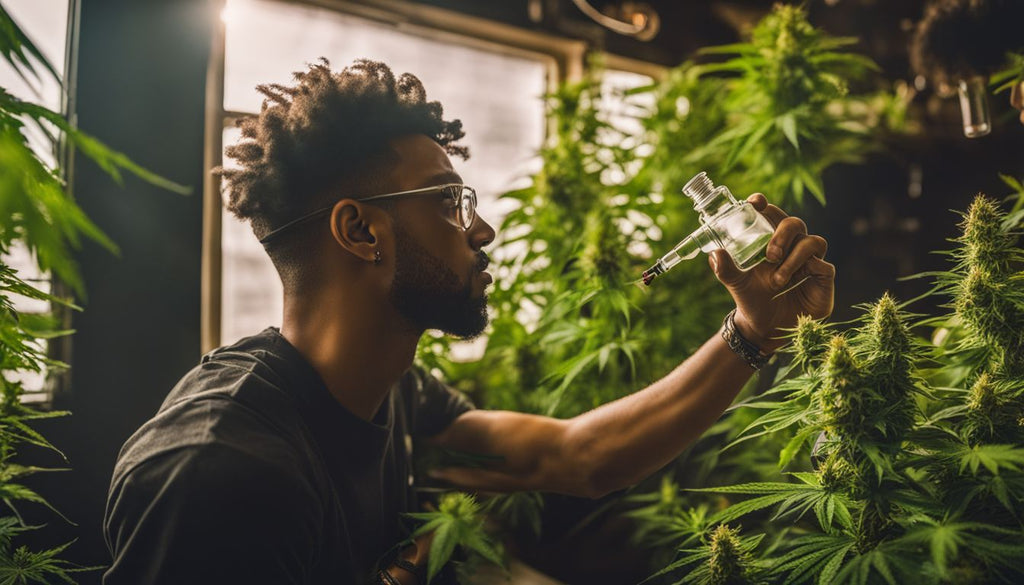
Many people are curious about the new trends in cannabis. Dab weed, a concentrated form of cannabis, is gaining popularity. This article will explore what makes dabbing different from smoking traditional marijuana, including its production and effects.
Get ready to learn something new!
Key Takeaways
- Dab weed is a concentrated form of cannabis with higher THC levels compared to traditional marijuana, making it much stronger.
- The production of dabs involves extracting THC using methods like butane or CO2 extraction, resulting in different forms such as oil, shatter, wax, and live resin.
- Using dab rigs and vaporizers allows for the consumption of these concentrates. However, users should be cautious as high temperatures and flammable materials can pose safety risks.
- Dabbing has potential health risks including lung damage, increased tolerance, dependence on cannabis, and the risk of developing cannabis use disorder due to its high potency.
- Making dabs at home is dangerous due to the use of volatile solvents such as butane which can lead to explosions or exposure to toxic chemicals.
What is a Dab and How is it Different from Traditional Cannabis?

Dabs are cannabis concentrates with much higher THC levels than traditional marijuana. The process involves extracting cannabinoids like THC and CBD from the plant, resulting in a highly potent substance for dabbing.
Understanding the world of cannabis concentrates
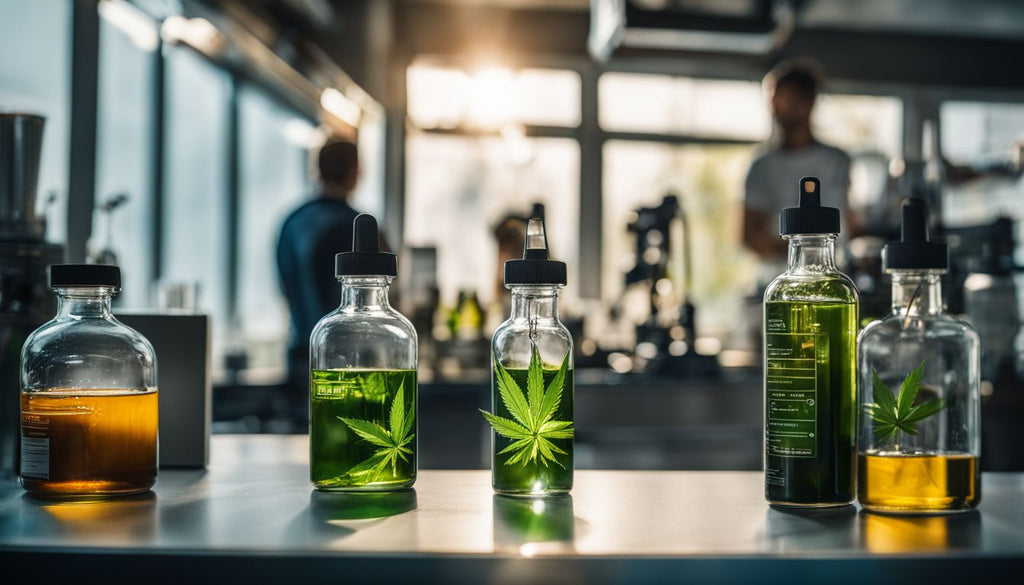
Cannabis concentrates come from processing the marijuana plant to extract THC, CBD, and other cannabinoids. This method strips away plant material, leaving behind a much stronger product than traditional cannabis.
Concentrates can take various forms including oil, shatter, wax, and live resin. Each type offers different potencies and experiences for users.
The creation of these concentrates involves several techniques like butane hash oil extraction or CO2 extraction methods. Both methods aim to pull out the concentrated substances from the cannabis plant efficiently.
Users favor concentrates for their high potency levels which provide more intense effects compared to smoking regular marijuana flowers. With growing popularity in cannabis culture and legalization movements across states, understanding these products is key for those looking to explore beyond conventional weed consumption methods.
The process of making dabs

To make dabs, cannabis plant material is processed to extract THC in a concentrated form. The process involves the following steps:
- Harvesting mature cannabis plants with high THC content.
- Grinding the plant material to increase surface area for extraction.
- Using solvents like butane or CO2 to extract the THC from the plant material.
- Purging the solvent to leave behind a concentrated extract.
Types of dabs (oil, shatter, budder, wax, live resin)
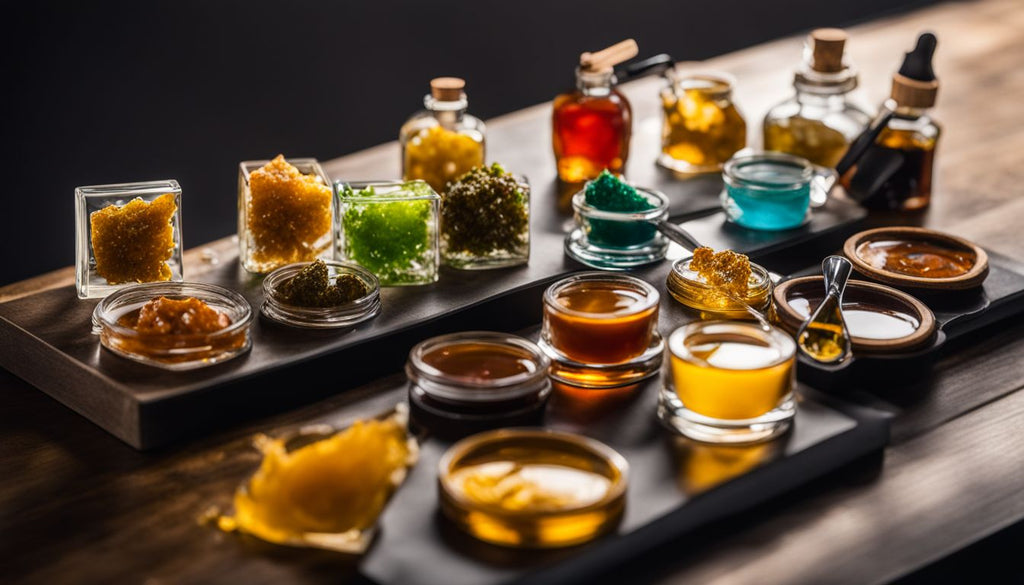
Dive into the diverse world of dabs, a highly concentrated form of cannabis that elevates the experience to the next level. Below is a simplified guide to understanding the different types of dabs available.
| Type | Description |
|---|---|
| Oil | Also known as hash oil, this liquid form is potent and can be used in vape pens. |
| Shatter | A solid, glass-like concentrate that shatters easily. It's known for its purity and potency. |
| Budder | This creamy concentrate has a malleable texture, resembling peanut butter, and offers intense flavors. |
| Wax | Similar to budder but with a more crumbly, less sticky texture. It's favored for its convenience and ease of use. |
| Live Resin | Made from fresh, frozen cannabis plants to preserve terpenes for a more flavorful experience. It's highly aromatic and potent. |
Each type of dab has its unique characteristics, offering a variety of experiences for users to explore.
Effects and risks of dabbing
Long-term use of dabs could also result in respiratory issues due to the high levels of THC and other compounds present in concentrated cannabis products.
Dabbing Rig and Vaporizers
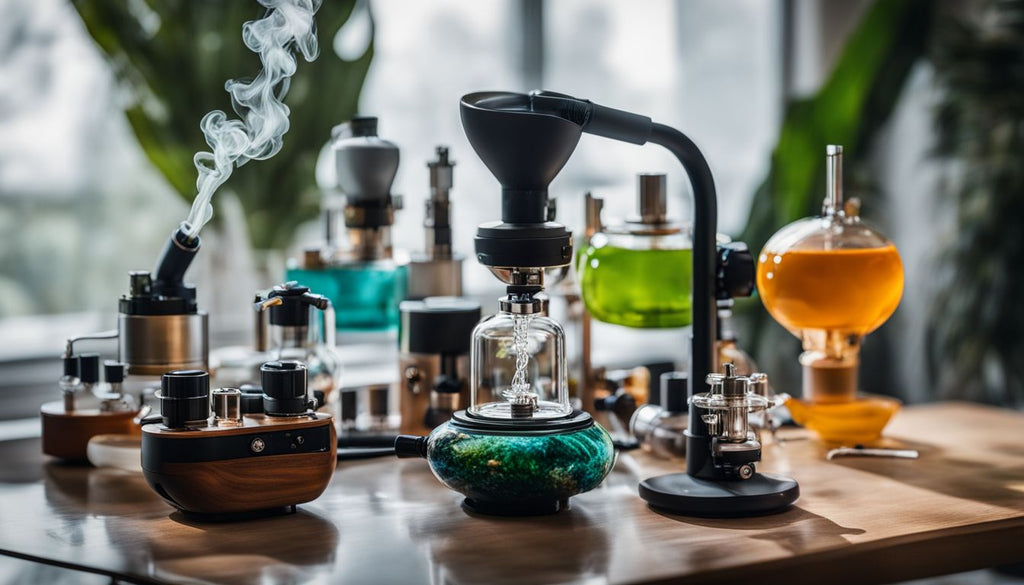
Differentiating between dab rigs and vaporizers showcases the diversity in consumption methods for cannabis concentrates. To delve deeper into the nuances of these devices, continue reading further.
Difference between dab rigs and vaporizers
Dab rigs and vaporizers have distinct differences. Dab rigs, often made of glass, heat a surface to which cannabis concentrate is applied, producing vapor for inhalation. Vaporizers, available in various types such as portable or desktop models, use heat to release cannabinoids and terpenes from dried flower or concentrates for consumption. Each device offers unique experiences and effects. However, caution should be exercised when using these devices due to potential health risks associated with inhaling concentrated cannabis products.
Understanding the contrast between dab rigs and vaporizers is essential for informed consumption decisions. While dabbing offers intense effects through the use of potent concentrates, vaporizing allows users to enjoy the benefits of cannabis without combustion-related toxins. Users should carefully consider their preferences and prioritize safety when selecting the most suitable method for their needs.
Types of rigs (e-nail, banger, honey bucket)

After understanding the difference between dab rigs and vaporizers, it's important to know about the various types of rigs used for dabbing. These types include:
- E-nail: This electronic device allows for precise temperature control, ensuring consistent heat for a smoother dabbing experience.
- Banger: A popular choice, the banger is made of quartz or glass and is heated with a torch before applying the concentrate.
- Honey bucket: This type of rig features a swinging arm that holds the concentrate, allowing for easy vaporization once heated.
Types of vaporizers (portable, desktop, pen)

Vaporizers are essential for dabbing and come in different forms depending on your lifestyle and preference. Here are the types to consider:
- Portable vaporizers offer convenience on the go, with compact designs and rechargeable batteries.
- Desktop vaporizers are perfect for home use, providing power and consistent temperature control for a smooth dabbing experience.
- Pen vaporizers are discreet and easy to use, resembling e-cigarettes for a stealthy approach to dabbing.
Potential dangers of using these devices
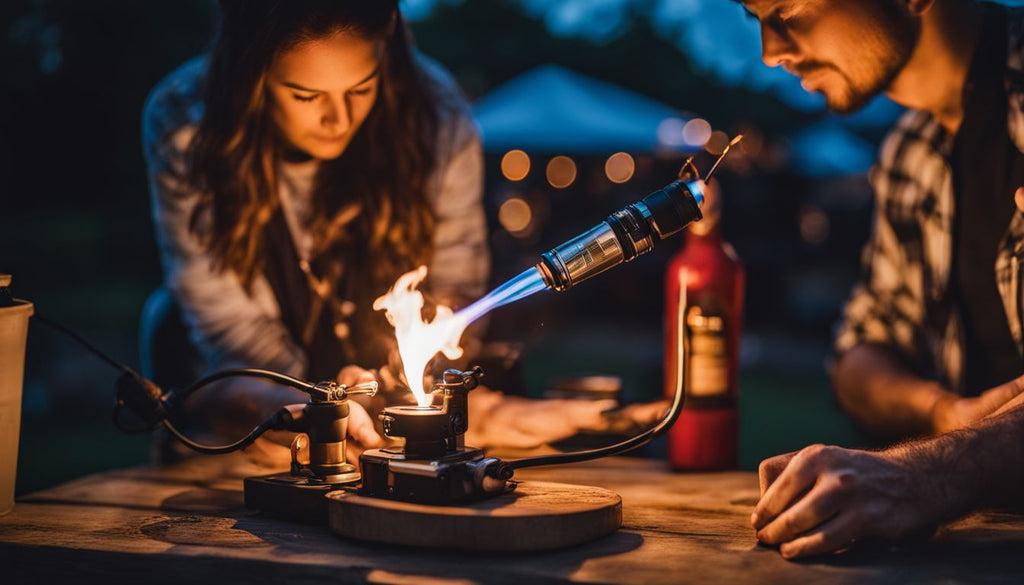
Using dabbing rigs and vaporizers can pose potential dangers to your health. The high temperatures involved in the dabbing process may lead to burns or accidents if proper precautions are not taken.
Additionally, improper use of butane torches for heating can result in fire hazards. Furthermore, using low-quality materials for making dabs or purchasing cheaply manufactured devices may introduce harmful toxins into the body, leading to serious health risks.
It is crucial to handle these devices with care and invest in quality products from reputable sources to minimize the potential hazards associated with their use.
When considering the potential dangers of using these devices, it's important for users to be mindful of the risks and take necessary precautions. Whether using a dab rig or a vaporizer, understanding how to safely operate these devices is essential for protecting one's well-being.
Health Risks and Addiction
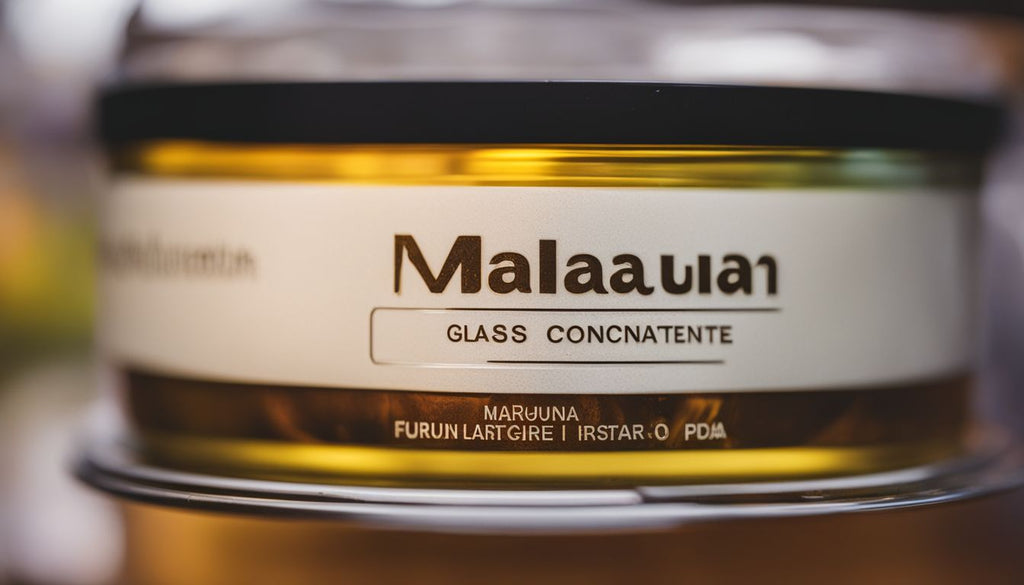
Dabbing poses serious health risks, including potential lung damage and increased tolerance to THC. Homemade dab extraction can also be dangerous due to the risk of explosions and exposure to toxic solvents.
Serious health risks of dabbing
Dabbing poses serious health risks, including an increased likelihood of cannabis use disorder. The high levels of THC in dabs can lead to rapid heart rate, anxiety, and even psychosis in some users.
Additionally, the production process for dabs involves using butane or other solvents which can result in respiratory issues or even explosions if not done correctly. Long-term effects may include lung damage from inhaling concentrated vapors and potential impairment of cognitive function.
Furthermore, dabbing at home without proper equipment and knowledge can be extremely dangerous. The risk of accidental burns or exposure to hazardous chemicals is significantly higher when attempting DIY extraction methods.
Dangers of making dabs at home

Making dabs at home poses serious dangers due to the use of highly flammable and volatile solvents such as butane. The extraction process can lead to explosions, fires, and severe burns if not carried out safely by knowledgeable professionals.
Additionally, the risk of toxic chemical residue in homemade dabs is high, which can cause adverse health effects when inhaled or ingested. Proper equipment and expertise are crucial for minimizing these risks.
The production of dabs at home without proper knowledge and precautions increases the likelihood of accidental poisoning or long-term health issues from exposure to harmful chemicals.
Addiction potential of dabs
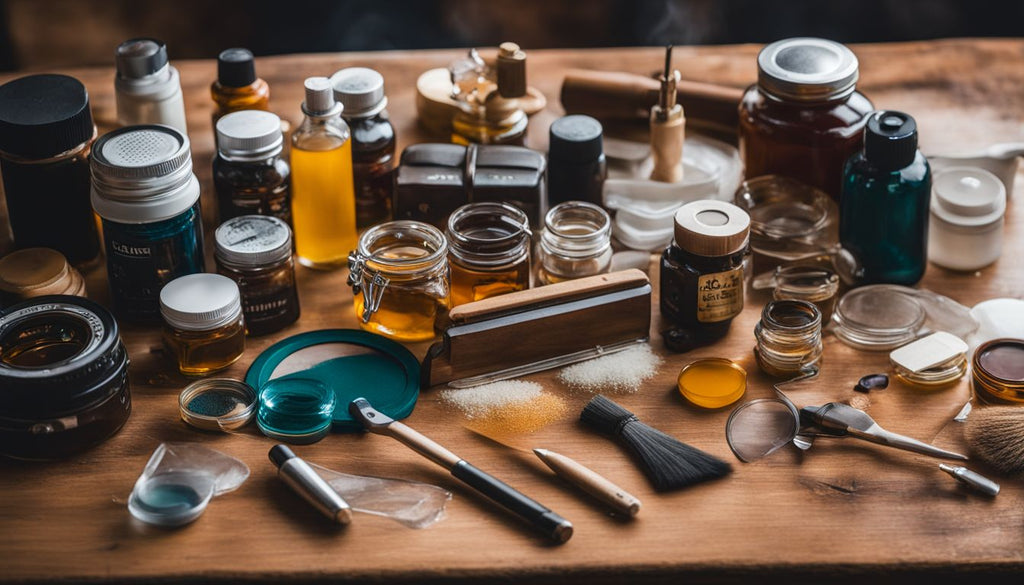
Dabs have a high addiction potential due to their intense potency. The concentrated THC in dabs can lead to tolerance, dependence, and withdrawal symptoms when use is stopped. Regular dabbing can also increase the risk of developing cannabis use disorder, especially for individuals with genetic or environmental vulnerabilities.
The quick onset and strong effects of dabs make it easy to overconsume, contributing to the addictive nature of dabbing. Additionally, the process of creating dabs at home using flammable solvents poses significant dangers and risks not only to physical health but also psychological well-being.
It's essential for individuals who use dabs regularly to be aware of these addiction risks and seek appropriate support if needed.
Treatment for cannabis use disorder
Addressing cannabis use disorder requires professional help. Supportive therapy and counseling are essential for individuals struggling with addiction to dabs or other cannabis products.
Treatment may also involve medication to manage withdrawal symptoms and cravings. Behavioral therapies can assist in modifying the individual's attitudes and behaviors related to substance abuse, ultimately leading to a healthier lifestyle.
A comprehensive treatment plan tailored to each individual's needs is crucial when dealing with cannabis use disorder. Seeking support from healthcare professionals experienced in addiction treatment can provide the necessary tools and resources for recovery from dab weed addiction or any form of cannabis use disorder.
Conclusion
In conclusion, understanding the world of cannabis concentrates reveals the process of making dabs and the various types available, such as oil, shatter, budder, wax, and live resin.
Dabbing rigs and vaporizers present different tools for consuming dabs. The potential health risks and addiction associated with dabbing highlight serious concerns that require attention in the community.
FAQs
1. What is dab weed?
Dab weed, also known as marijuana extracts, is a highly potent form of cannabis made through THC extraction from the marijuana resin.
2. How does dab weed differ from traditional cannabis?
Unlike traditional cannabis, which people usually smoke or eat in its plant form, dab weed involves concentrated forms like oils and waxes created using specific cannabis concentrate production techniques. This makes it much more potent.
3. What are some common ways to consume dab weed?
Cannabis dabbing techniques include using special equipment like dab rigs or vaporizers designed for inhaling the vaporized concentrates, offering a different experience than typical cannabis consumption methods.
4. Is dab weed stronger than regular marijuana?
Yes, due to advanced THC extraction methods used in making marijuana extracts, dab weed has a higher potency level compared to traditional cannabis forms.
5. Are there any new laws about using dab weed compared to traditional cannabis?
With the ongoing trend of cannabis legalization in various places, rules around consuming both traditional and concentrated forms like dabs might vary by location but generally follow similar regulations regarding age limits and possession amounts.






![Pipe by Vessel [Gunmetal] - Headshop.com](http://www.headshop.com/cdn/shop/files/76cd9387-8d22-4015-bd12-46bbbcef263a_{width}x.jpg?v=1682452995)
![Pipe by Vessel [Gunmetal] - Headshop.com](http://www.headshop.com/cdn/shop/files/57468aee-c849-45b9-9000-ec1eaa3e3910_{width}x.jpg?v=1682452997)



























Leave a comment